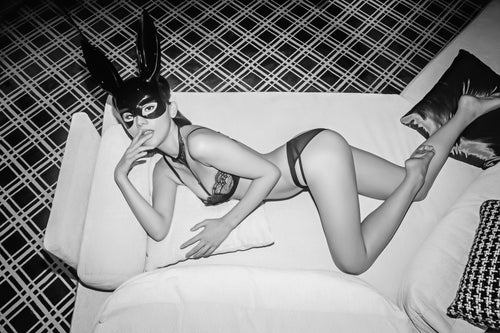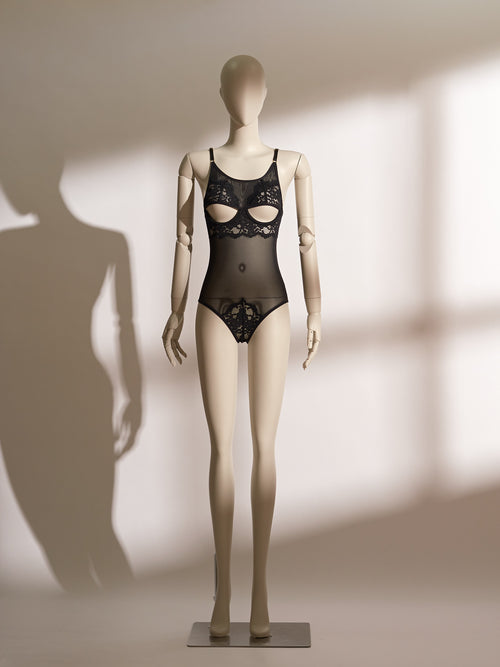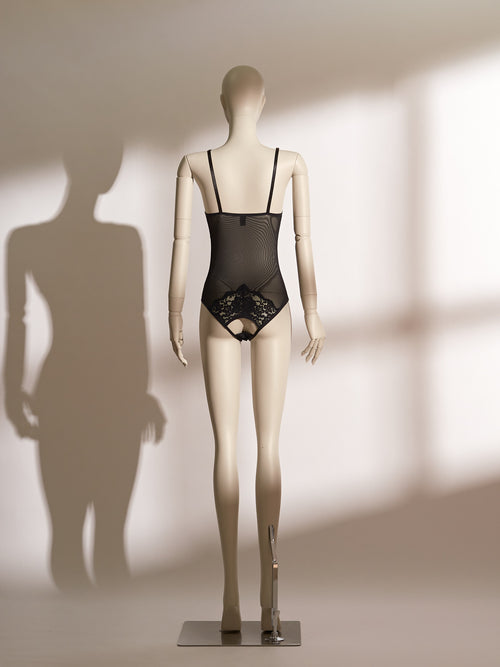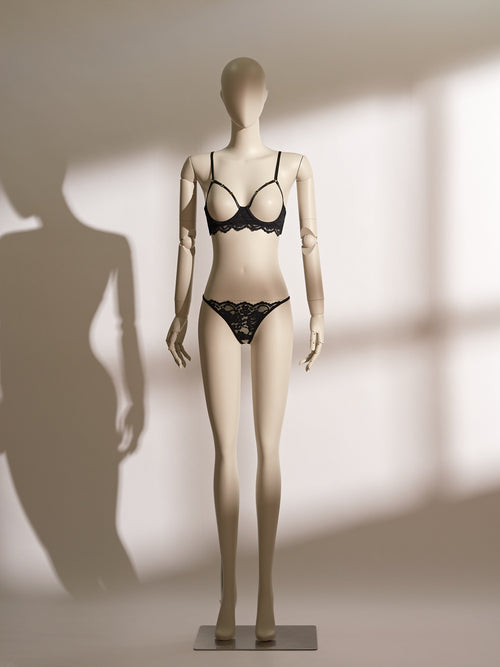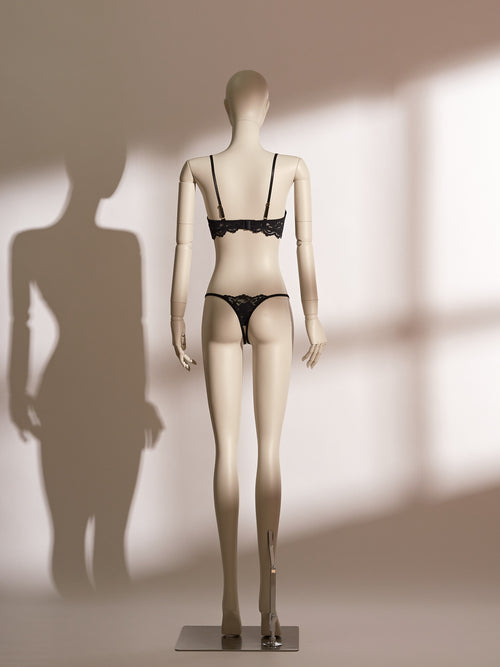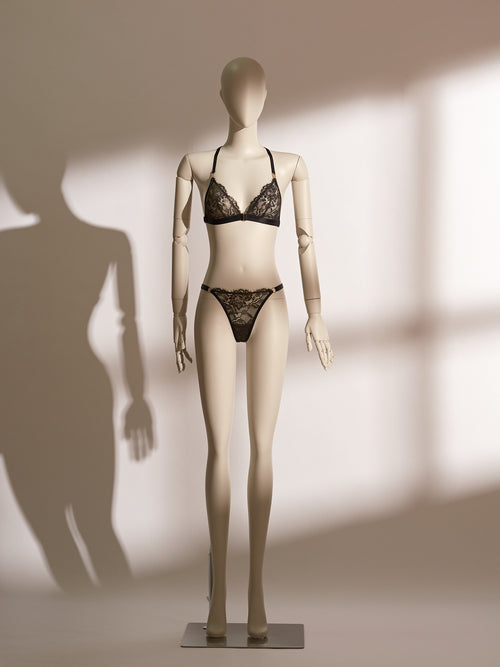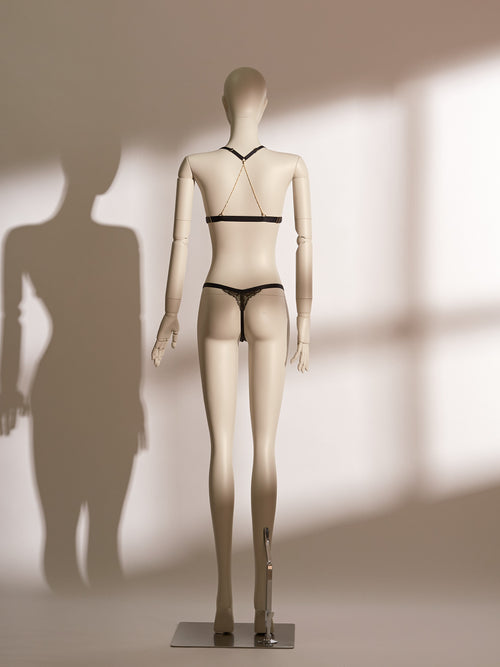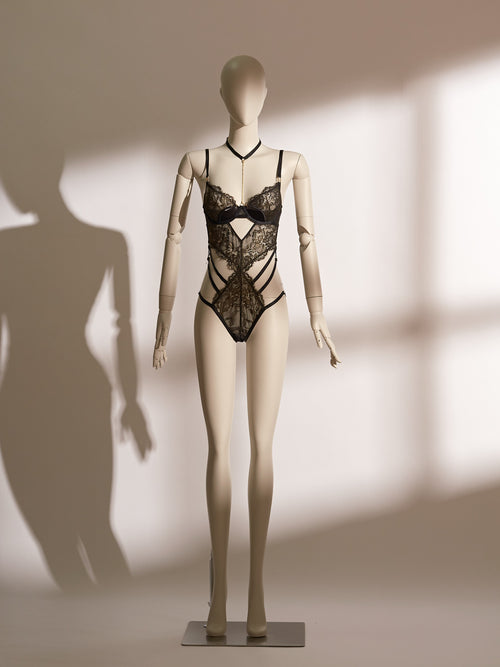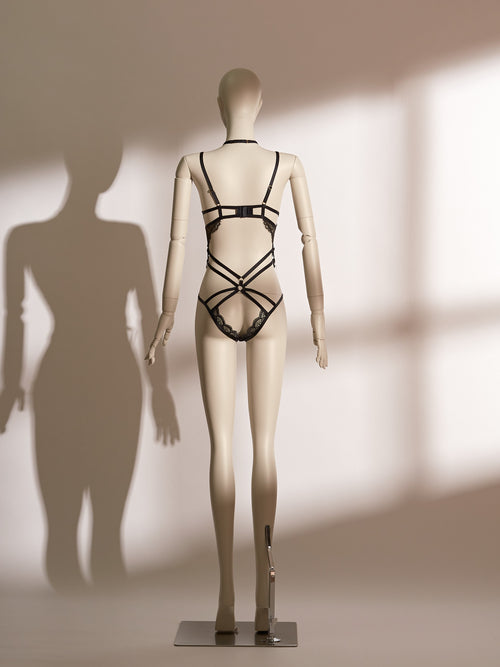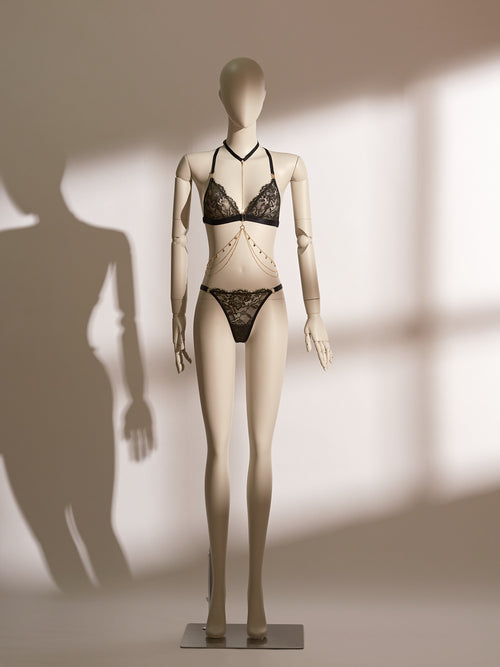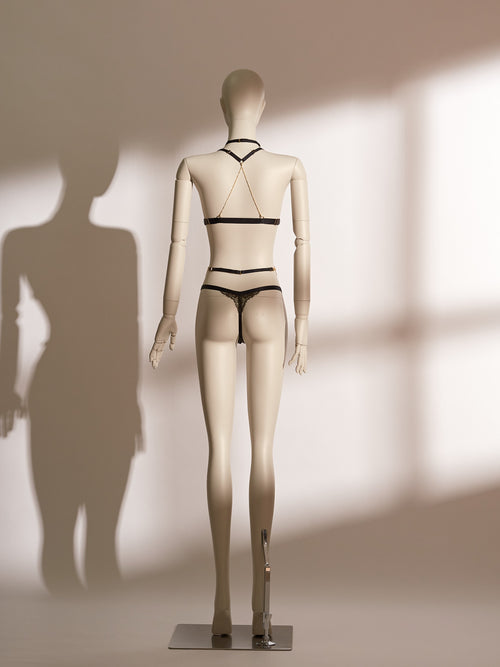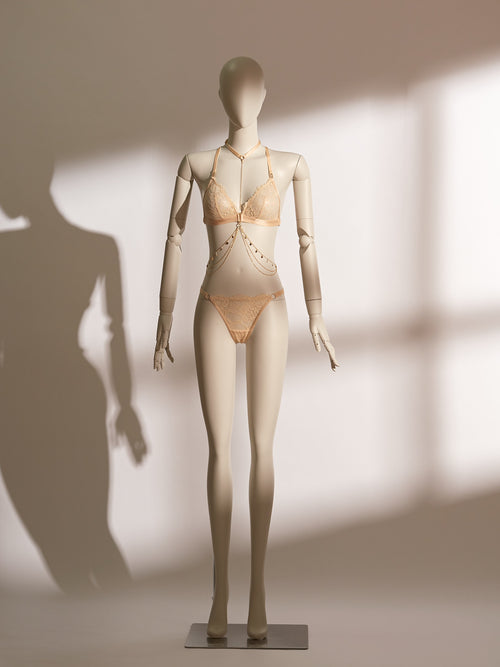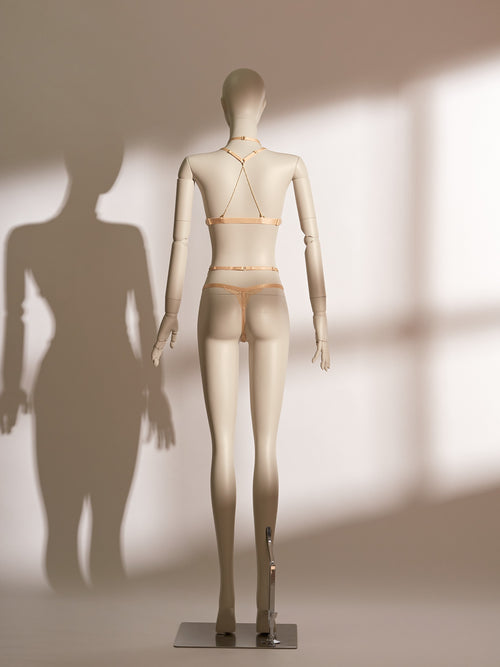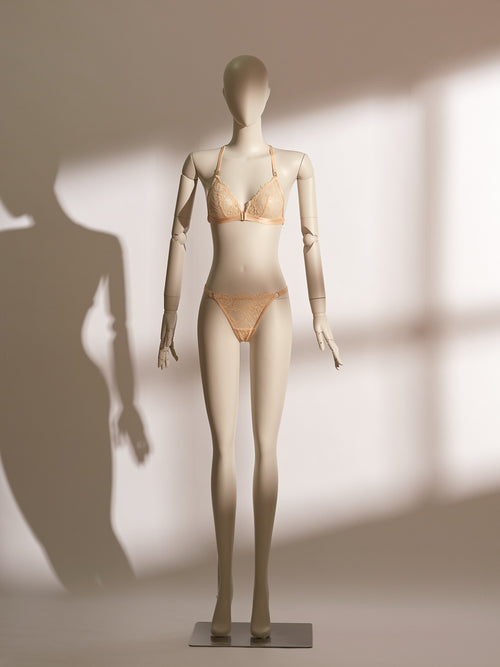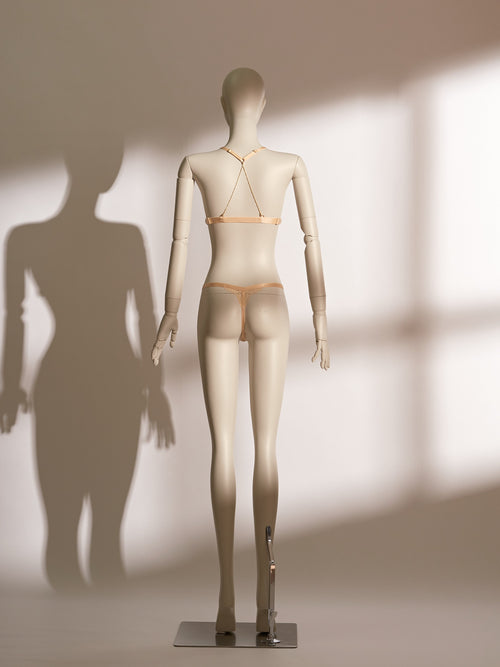Welcome to our store
There was a time when lingerie didn’t need to explain itself. It spoke in silk and lace, in whispered seams and the curve of a shoulder. It was intimate by nature—an art of suggestion, not spectacle. But lately, the lingerie industry seems to have lost that softness. The whisper has turned into a broadcast, and often, the signal is too loud to feel like anything at all.
In the past decade, lingerie has drifted. What was once a space for beauty, craft, and emotion has become another battleground for messaging. Somewhere along the way, style took a back seat to statements. Brands tried to speak to everyone and ended up saying nothing. The cut and feel of the garment—the soul of lingerie—was buried under slogans and performative politics. And the result? An intimacy business that feels increasingly impersonal.
That’s why Sydney Sweeney’s lingerie brand and her American Eagle campaign caught people off guard. No, it wasn’t about lingerie. But there she was: simple jeans, a tank top, a look that didn’t scream but simmered—confident, unforced, charming. It reminded people that clothing can still be powerful without pretending to solve the world. That femininity can exist without a footnote. That fashion aesthetics can just… be.
And maybe that’s why her upcoming lingerie brand feels like a small beacon. We don’t know yet what it will look like. But if the tone of that campaign is any clue, it might signal something refreshing: a return to the emotional language of designer lingerie. Not intimate apparel that winks with irony or over-explains itself. Just pieces that fit beautifully, feel like they belong, and make the wearer feel seen.
Because let’s face it: the industry doesn’t need yet another manifesto about plus-size bodies, transgender visibility, or nipple liberation wrapped in mesh and masquerading as innovation. We all know the brands doing it—and frankly, we’ve seen the performance before.
When Political Theatre Kills Craft
The real damage done by the Woke turn in fashion isn’t just aesthetic. It’s philosophical. For centuries, sexy lingerie has been one of the purest expressions of craftsmanship—a quiet celebration of fine material, intimate construction, the tactile pleasure of the human form. It is clothing designed to be felt before it is seen. But in recent years, that craft has been sacrificed at the altar of identity performance.
The obsession with representation above all else has left little room for the pursuit of beauty as an end in itself. Brands now treat lingerie not as a creative endeavor, but as a social instrument—flattening complex human desires into moral slogans, and expecting consumers to applaud instead of desire. What once existed to seduce now exists to signal. What once delighted in nuance now leans into noise. But for those of us who still believe in the power of designer lingerie—that fusion of fine technique and emotional intelligence—this trend feels like cultural erosion.
This is not to say that inclusion and innovation are enemies of artistry. They’re not. But when politics becomes the product—and not just the context in which a product exists—something vital is lost. We no longer ask what feels good. We ask what offends least. The result is intimate apparel design that’s louder than it is loving, more righteous than it is radiant.
Human Values, Lost in Translation
This shift in focus from aesthetics to ideology has consequences that run deeper than fabric choice. It erodes our sense of emotional connection to the act of dressing, particularly the intimate act of dressing for oneself. In the name of progress, the market has grown colder, more alienating, and more prescriptive.
At its core, sexy lingerie isn’t about politics. It’s about permission—the permission to feel beautiful, to experience pleasure, to define your own sensual identity. And when this is filtered through the cold, joyless machinery of corporate virtue-signaling, something deeply human is stripped away.
There is a quiet dignity in good design. A reverence for proportion, for texture, for movement. These are the things a skilled designer obsesses over. They are the things the wearer notices in the mirror, even if no one else ever sees. This is the spiritual heartbeat of the craft—and it’s the very thing political fashion has forgotten.
Inclusion by Design, Not Obligation
Now, don’t get this wrong. Fashion should serve everyone. The lingerie world is better when it includes curves, queer bodies, trans bodies, different needs. But the way to get there isn’t by stretching every brand into every shape. It’s by letting brands specialize, letting them speak with intention.
Plus-size women deserve designers who obsess over the curve of a bust and the support of a cup. Trans customers deserve brands who study how bodies shift and how confidence is worn. These markets matter. But we serve them better by building brands around their needs—not by guilting every label into vague universality. That’s not progress. That’s dilution.
Fashion, when it’s honest, is plural. Let’s let it be plural. Let’s stop demanding every voice sound the same.
What We’re Hoping For
If Sweeney’s label arrives with that old-school respect for craft, if it dares to be sensual without shame, tasteful without disclaimers—it might just shift the energy. It might be the start of something that feels real again.
A little less program. A little more poetry.
We don’t need more buzzwords stitched into briefs. We need artisanal lingerie that lets people feel like themselves. That celebrates bodies without needing to narrate their meaning. That dresses not just the skin, but the mood.
Let’s hope Sweeney gets it. Let’s hope she builds something quiet, beautiful, and brave enough not to apologize for either.
If this speaks to you, come explore our own approach to lingerie. At Mismuse, we believe in ethically made lingerie, precision, pleasure, and the power of garments that make you feel unmistakably yourself.

